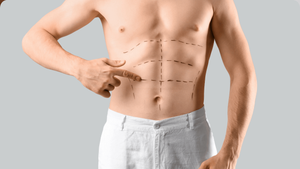Treatment GuideJust DiagnosedSex & DatingAfrican AmericanStigmaAsk the HIV DocPrEP En EspañolNewsVoicesPrint IssueVideoOut 100
CONTACTCAREER OPPORTUNITIESADVERTISE WITH USPRIVACY POLICYPRIVACY PREFERENCESTERMS OF USELEGAL NOTICE
© 2025 Pride Publishing Inc.
All Rights reserved
All Rights reserved
By continuing to use our site, you agree to our Privacy Policy and Terms of Use.
Winter usually includes a higher risk of infection from colds and flu, among other bugs spread through casual contact. So this is a good time to review the most basic way to prevent the spread of these illnesses: hand washing. It is time to ask yourself and those around you, 'Can you describe when and how to wash your hands properly?' There are certain instances when washing your hands is essential, such as after visiting the toilet, after sneezing or blowing your nose, before and after handling foods, before and after handling children, and after being around people with colds or the flu. You should also routinely wash your hands during the day, especially if you happen to sneeze into them. By the way, learn to sneeze into your bent elbow and teach others to do the same--that way the germ transfer process during handshaking is at least slowed down a bit. The basic tools of hand washing are clean water and soap, but the mechanical action of removing dirt and bacteria is the most important part of the process. Just running water or even water and soap over your hands without a good rubbing or scrubbing is not enough. Thoroughly wet your hands before adding soap. Then make some bubbles. When you fully lather up with soap, you can better dislodge the dirt, oils, and bacteria that harbor in the naturally rough surfaces and folds of your skin. Next add mechanical action by vigorously rubbing your hands together. This action should spread the soap lather completely. That is, you should rub lather onto and between your fingers, in your palms, and even under your fingernails. Once you have scrubbed these areas, the soap and floating dirt, oils, and bacteria you've stirred up must be removed by additional rubbing--this time under a stream of clean water. Use a clean paper or cloth towel to dry your hands. Alternatively, you may use a hand dryer or simply air-dry by holding or swinging your hands away from your body. If you use a hand dryer, don't rub your hands together--unless you have done a stellar job of washing--because you risk spreading bacteria from one part of your hand to another. Keep some lotion handy to moisturize your hands after washing to reduce chapping and irritation. After you have done all that work to get your hands clean, try to avoid touching surfaces in restrooms and other public places. You can use your elbow or shoulder to open a swinging door, or a paper towel to turn a doorknob to exit a public restroom (where you can't count on others to practice your very efficient hand-washing technique). Obviously, it takes a bit of effort and time to develop a good hand-washing technique. But when you weigh the rewards of preventing diseases transmitted through casual contact against the illness you may face if you don't practice sound hygiene habits, you can see that it is worth the effort you make, both for yourself and for those around you. Enjoy a healthier winter season by spreading the word and not the germs. Fields-Gardner is the director of services for the HIV nutrition company Cutting Edge and is a member of the International AIDS Society and the American Dietetic Association's Dietetic Practice Group on HIV and AIDS.
From our Sponsors
Most Popular
“So much life to live”: Eric Nieves on thriving with HIV
September 03 2025 11:37 AM
Thanks to U=U, HIV-positive people can live long, happy, healthy lives
July 25 2025 2:37 PM
The Talk: Beyond the exam room
August 13 2025 3:15 PM
BREAKING: Supreme Court rules to save free access to preventive care, including PrEP
June 27 2025 10:32 AM
Messenger RNA could be the key to an HIV vaccine — but government cuts pose a threat
August 20 2025 8:02 AM
“I felt like a butterfly”: Niko Flowers on reclaiming life with HIV
July 23 2025 12:22 PM
Dancer. Healer. Survivor. DéShaun Armbrister is all of the above
July 02 2025 8:23 PM
The Talk: Starting the conversation
July 25 2025 4:47 PM
The lab coat just got queer
August 21 2025 10:00 AM
Plus: Featured Video
Latest Stories
HIV-positive men stage 'Kiss-In' protest at U.S.-Mexico border
December 01 2025 12:56 PM
What the AIDS crisis stole from Black gay men
December 01 2025 6:00 AM
Amazing People of 2025: Javier Muñoz
October 17 2025 7:35 PM
It’s National PrEP Day! Learn the latest about HIV prevention
October 10 2025 9:00 AM
“I am the steward of my ship”: John Gibson rewrites his HIV narrative
September 16 2025 2:56 PM
The Talk: Owning your voice
August 25 2025 8:16 PM
The Talk: Navigating your treatment
August 01 2025 6:02 PM
How the Black AIDS Institute continues to fill in the gaps
July 25 2025 1:06 PM
1985: the year the AIDS crisis finally broke through the silence
June 26 2025 11:24 AM
VIDEO: A man living with HIV discusses his journey to fatherhood
June 10 2025 4:58 PM
Trump admin guts $258 million in funding for HIV vaccine research
June 03 2025 3:47 PM
Grindr is reminding us why jockstraps are so sexy and iconic
May 02 2025 5:36 PM
HRC holds 'die-in' to protest Trump health care cuts
April 28 2025 2:11 PM
Two right-wing Supreme Court justices signal they may uphold access to PrEP and more
April 21 2025 4:10 PM
500,000 Children at Risk: PEPFAR Funding Crisis
April 08 2025 3:51 PM
Broadway's best raise over $1 million for LGBTQ+ and HIV causes
April 03 2025 7:15 PM
The Talk Season 5 premieres this spring with HIV guidance for the newly diagnosed
March 26 2025 1:00 PM








































































